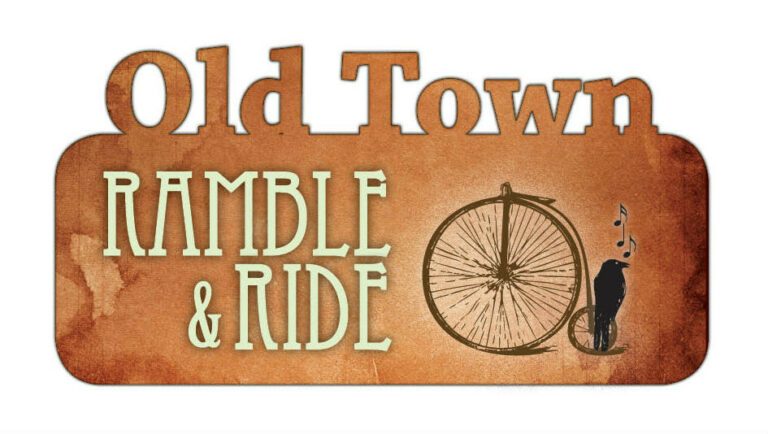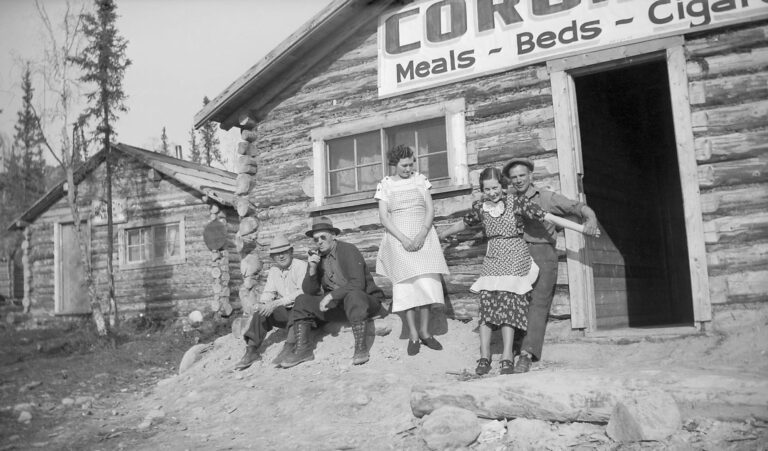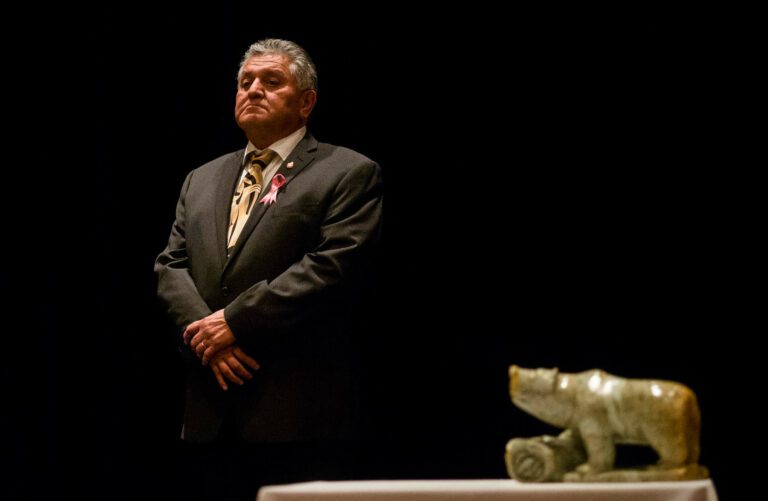On EDGE: ANALYSIS
“We are fully adopting this and working to implement it within the laws of Canada.”
Federal Indigenous and Northern Affairs Minister Carolyn Bennett attempted to set the record straight about Canada’s promised implementation of the UN Declaration on the Rights of Indigenous Peoples (UNDRIP) this week at the United Nations headquarters in New York.
Canada, Australia, New Zealand and the U.S. were the only countries to vote against UNDRIP when it was first passed in 2007. But this week at the 15th session of the UN Permanent Forum on Indigenous Issues, Bennett changed that.
“I am here to announce on behalf of Canada, that we are now a full supporter of the declaration, without qualification,” she said Tuesday. “We intend nothing less than to adopt and implement the declaration in accordance with the Canadian Constitution.”
But just how, exactly, does Canada plan to do this?
UNDRIP: The basics
The UN Declaration is a set of 46 articles that are essentially best practices for countries to adopt with respect to their treatment of, and engagement with, Indigenous peoples.
Among the key articles within UNDRIP is the requirement that Indigenous peoples be afforded the right to free, prior and informed consent (FPIC) when it comes to industrial development on their traditional territories.
Unlike international conventions, declarations are not legal documents and thus are unenforceable. But countries that officially sign on to UNDRIP are expected to put its articles to use “in good faith” within domestic law and policy.
Among the key articles within UNDRIP is the requirement that Indigenous peoples be afforded the right to free, prior and informed consent (FPIC) when it comes to industrial development on their traditional territories.
It also affirms Indigenous peoples’ right to self-determination of their political status and economic, social and cultural development.
That self-determination, however, is limited by article 46 of UNDRIP. This article was added last minute at the request of countries, despite protests from Indigenous groups, and says that nothing in the declaration can hinder the total integrity or political unity of a sovereign and independent state.
“The exercise of the rights set forth in this Declaration shall be subject only to such limitations as are determined by law,” it reads.
Fitting UNDRIP into Canadian law
“Our Government will take steps to endorse this aspirational document in a manner fully consistent with Canada’s Constitution and laws.”
That was former Prime Minister Stephen Harper during his throne speech in 2010, after Canada finally agreed to adopt the declaration — at least as a non-legally binding document.
“We are breathing life into section 35,” Bennett said on Tuesday, calling the section on Indigenous rights a “robust framework” and “box of rights.”
Though the tone and language used by Bennett and Justice Minister Jody Wilson-Raybould during this week’s meetings in New York differ substantially from such former statements and actions on the part of the Harper government, the question remains: how will UNDRIP fit within the Canadian Constitution?
Harper didn’t think the right to FPIC — which he and fellow Conservatives characterized as the right to a veto — could align itself with Canadian law. But according to Bennett, free, prior and informed consent is already supported by section 35 of the Constitution.
“We are breathing life into section 35,” she said on Tuesday, calling the section on Indigenous rights a “robust framework” and “box of rights” that includes the right to FPIC.
Bennett indicated that the consultations that industry and government are already required to conduct with Indigenous governments must be free, prior and informed.
“If you don’t do that, if you wait until after the project is launched and started, this won’t be possible,” she warned. “This is putting everyone on notice: you better get this done, or else the project will flounder.”
Changing laws, rewriting policies
But installing UNDRIP and the standard of free, prior and informed consent into Canadian law will not be so simple, Wilson-Raybould signalled in a speech that opened the forum on Monday.
“Tied to the fundamental work of nation rebuilding and implementing the UNDRIP, one of the biggest legal questions we need to unpack is how to implement the concept of ‘free, prior and informed consent,’” she said.
“There are many facets to the question, differing perspectives, and a number of options. All require a new nation-to-nation relationship — reflected in our unique Constitutional requirements.”
Moving forward, Wilson-Raybould said, will require “laws to change and policies to be rewritten” — an effort that will be undertaken in full partnership with Indigenous peoples.
“Canada will engage with Indigenous groups on how to implement the principles of the Declaration,” a release from Bennett’s office said on Tuesday. “This engagement will include provinces and territories, whose cooperation and support is essential to this work and to advancing the vital work of reconciliation with Indigenous peoples in Canada.”
Looking North for Answers
Recent comments from Prime Minister Justin Trudeau indicate that Ottawa is eyeing the territory’s “collaborative consent” approach to negotiating with Indigenous governments.
“In the NWT, they have boards that examine the projects from the very beginning with Indigenous voices,” Trudeau said. “The talk of veto or not veto is highlighting the failure of the process as it exists right now. It shouldn’t ever even come to the decision, is it a veto or not a veto. We should be working together from the very beginning.”
The collaborative consent model is spelled out in a recent policy paper by former NWT cabinet minister Michael Miltenberger and GNWT negotiator Merrell-Ann Phare. (Former AFN National Chief Phil Fontaine’s name was added to the version more recently shared with Natural Resources Minister James Carr.)
“Until meaningfully addressed, the need for the free, prior, informed consent of Indigenous rights-holders will continue to be the most contentious element of resource development in Canada,” the paper reads.
Collaborative consent, according to the paper, takes an interest-based approach to negotiations rather than one set in a fixed mandate, and removes most of the bureaucracy from the equation in order to move through negotiations at a much quicker rate.
“Section 35 and the honour of the Crown require consultation and accommodation where the Crown might impact Indigenous rights,” the report states. “However, starting from a premise where the goal is no impact on rights — through collaboratively crafting a jointly acceptable law, policy, project, negotiation position, or revenue arrangement — is a preferred approach. It is an approach that leads to reconciliation.”
Though the approach has only been technically applied in the negotiations behind the establishment of the Thaidene Nene protected area in the NWT, Premier Bob McLeod recently told EDGE it is being looked at as the way forward for unfinished land claims and self-government negotiations in the territory.
Miltenberger said the spirit of collaborative consent has also been applied during the development of legislation and policy, like the creation of the NWT Water Strategy, transboundary water negotiations, the Wildlife Act and the Species at Risk Act.
Such an alternative model has been praised by negotiators from the community of Deline, which recently completed its self-government agreement after 20 years of negotiation, and the Lutsel K’e Dene First Nation, which is a partner on Thaidene Nene.
Free, prior and informed consultation?
Just how much will legally change through the full implementation of UNDRIP is still unclear.
In her statement on Tuesday, Bennett revealed her view that FPIC is already part of Canadian law, upheld by existing processes like comprehensive claims.
“Modern treaties and the self-government agreements are the ultimate expression of free, prior and informed consent,” she said.
Wilson-Raybould alluded to something similar in her speech: “There are already many positive steps that have been taken. Within Canada, there are modern treaties and examples of self-government — both comprehensive and sectoral.”
For those who refer to modern negotiations as “termination tables” and who see section 35 as a much weaker set of protections for Indigenous peoples in Canada than UNDRIP, those statements probably don’t offer much in terms of optimism.
Furthermore, the collaborative consent model being pushed by our northern authors seems to centre much of its focus on shared benefits from resource extraction.
Still, it’s interesting to note that while Miltenberger and Phare’s paper urges Canada to fully implement UNDRIP, it makes clear that caging free, prior and informed consent within Canada’s existing Constitutional framework may not be consistent with truly collaborative consent.
“While the s.35 consultation and accommodation will always be available and required should collaboration fail, this approach should be used as sparingly as any other unilateral approach might be used in building relationships with any other government,” the paper states.
Inuit Tapiriit Kanatami president Natan Obed said Tuesday that it appears Canada is still couching its promise to implement UNDRIP in qualifiers, suggesting that the minimum standards affirmed in UNDRIP will be interpreted to fit into Canada’s interpretation of Section 35.
“I look forward to working with Indigenous representatives and the Government of Canada to move beyond the current unilateral positions stated today,” he said.
The federal government has pledged to establish a truly nation-to-nation relationship with Indigenous peoples in Canada, and to ensure that the implementation of UNDRIP is done in full consultation with them.
But as Wilson-Raybould notes, it’s going to be one heck of a challenge for Canada, especially if trying to make a new approach fit within an old system.
“Practically speaking, the administration of Indigenous affairs in Canada is not organized around Indigenous Nations,” she said. “For the most part, it is organized around an imposed system of governance… Simply put, we need to move beyond the system of imposed governance.”
The minister says she has faith such a move can be accomplished with existing legal tools.
But whether or not Indigenous nations agree with — and consent to — Canada’s interpretation of UNDRIP in accordance with the Constitution might just be the first test of the declaration’s weight in Canada.
Or it might be an indicator that embedding UNDRIP within section 35 is, perhaps, a qualification after all.







